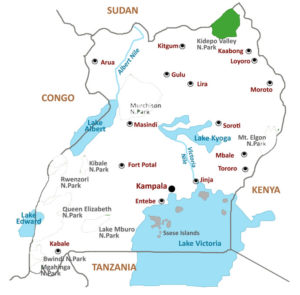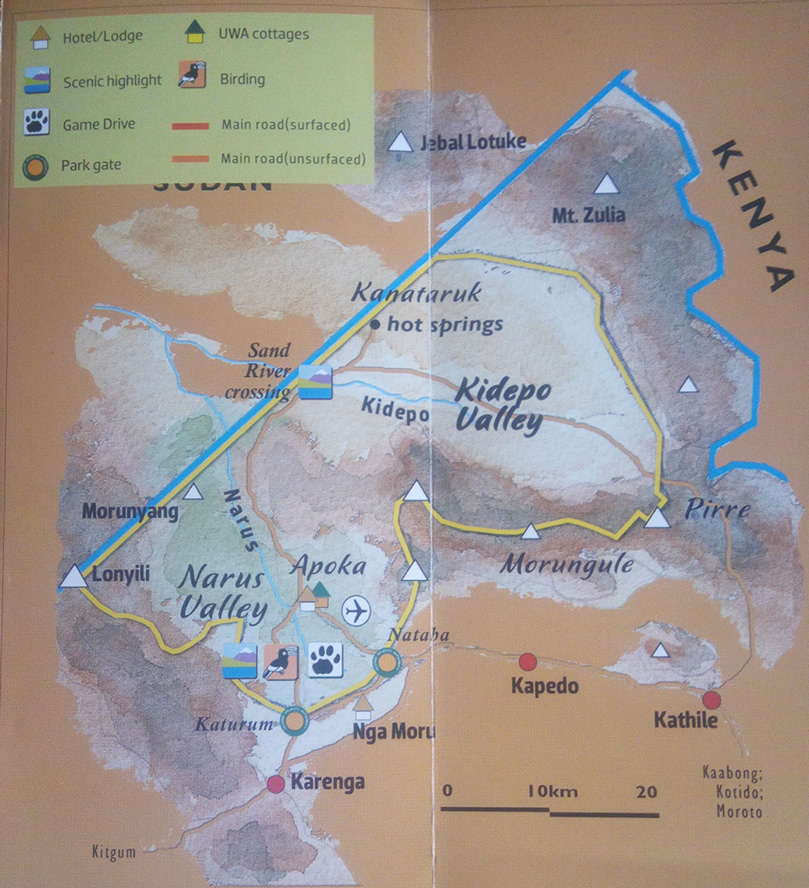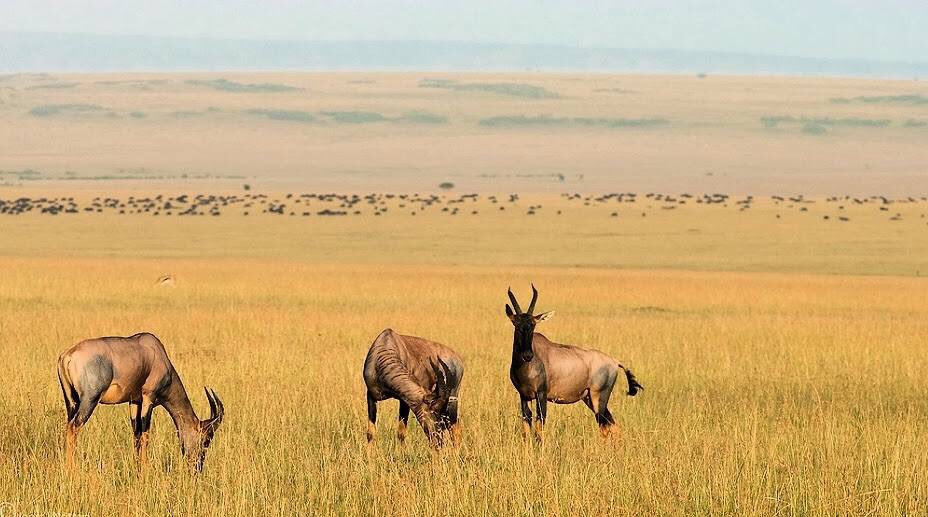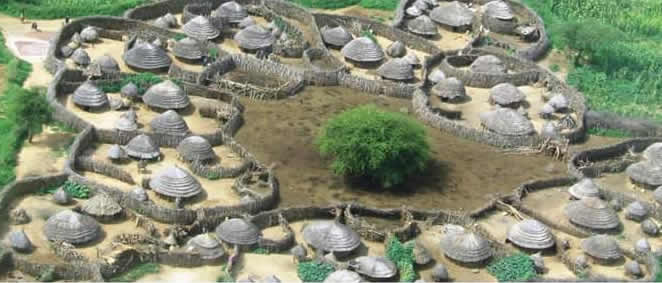Kidepo Valley National Park covers 1,442 square kilometers in size, and is among the most spectacular parks in Uganda, though not very accessible. It was first gazetted as a game reserve and upgraded to a national park status in 1962.

Kidepo is located in the remote North-East of the country, bordering Sudan and Kenya, in the Karamoja region. Lying at an altitude range between 914 m. and 2,750 m. above sea level, Kidepo is one of East Africa’s last great wilderness. Despite being situated under semi-arid climatic conditions, the park contains two rivers, Kidepo and Narus that flow only after heavy rains that provide water to the wildlife. During dry months, wildlife depend on the remnant pools along the Narus.
It is truly a much interesting moment to take a trip to Kidepo by use of surface road transport which provide en-route view drives as well as charter flights are booked from Entebbe-Kajjansi airstrip to reach Kidepo.
Map Of Kidepo National Park

What to do in Kidepo
A number of game drive loops direct visitors to wildlife viewing locations in the Narus valley in the South West of the Park, where you can do other activities including mountain hiking, bird watching, camping, community visits and cultural performances participation.
Game Watching
Kidepo’s open savanna, bush and dry mountain acacia forests habitats support a wide variety of wildlife, from up to 86 mammals, birds among others. It has unique animals, found nowhere else in Uganda such as the cheetah, bat-eared fox, caracal, striped hyena among others.

Other mammals whose numbers cannot fail to impress the visitors to Kidepo National Park while on a game drive include Buffaloes, Elephants, Rthschild’s giraffes, lions, leopards, spotted hyenas and back backed and side striped jackal. There are also 17 antelope species in the Park.
Birding
The bird checklist of the park is of 475 species recorded, including more than 56 raptors, like pygmy falcon, Ostriches, secretary bird, Kori bustard, Abyssinian Roller & ground hornbill, tawny eagle, secretary bird, vultures among others. The distinctive checklist also includes 100 dry country residents of northern Uganda and Kenya, with a number of endemics to Kidepo such as rose ringed parakeets, Clapperton’s francolin and Karamoja Apalis.
Nature & Community Walks
While in Kidepo, you can engage in short nature walks with a ranger guide around Apoka Rest Camp from where you can spot species such as Zebras, Hertebeest and reedbucks. Longer walks also provide sightings of the giraffes as well as distant lions.

One can also go for a Community walk to learn about life in the local Karamojong homesteads in the regions/ villages of Karenga, Kawalakol and Lorukul.
Hiking
A visitor can also explore the Morungule range, home of the Ik tribe, rising from the plains to the North East of Apoka. This can be done on a hiking adventure on foot with a guide escort.
How to get there?
Kidepo Valley National park can be reached by both road and air.
By Road
Driving is more rewarding, as much of Karamoja, like Kidepo itself, is a vast and unspoiled wilderness. However, road conditions are sometimes difficult and 4WD vehicles are usually essential.
There are four possible routes by road, namely;
- Kampala – Karuma – Gulu – Kitgum – Kidepo = 571kms
- Kampala – Karuma – Lira – Kotido – Kidepo = 705kms
- Kampala – Mbale – Sironko – Kotido – Kaabong – Kidepo = 740kms
- Kampala – Mbale – Soroti – Moroto – Kidepo = 792kms
Routes via Mbale pass to the east of Lake Kyoga to reach northern Uganda while those via Karuma pass to the west.
By Air
Though Air charters may not be much rewarding for the eyes of the visitor, they save a lot of time for those on tight schedules. Charter flights to Kidepo may be arranged from Kampala (Kajjansi), Kampala Aero club, or Entebbe with Eagle Aviation. Flights take about two hours.
The Civil Aviation Authority has plans to make Lomej, to the east of Apoka, an international airport to enable visitors to fly direct to Kidepo from other countries.
Where to Sleep
You don’t need to worry about where to sleep while in the Kidepo. The park provides several accommodation facilities. There is a 21 twin-bed bandas, 14 of which are self-contained. There is also a 4-bedroom guest house for self-catering visitors.
There are scenically located campsites in the Park at Kakine and Nagusokopire, a shelter, flushing toilets, water and firewood are provided as well as a ranger guide to entertain guests with cultural stories and other local information.
Others include Apoka lodge, N’gamoru camp (Luxury), Fugly hotel among others.
Others
Climate:
The Park has a semi-aridclimate with just one light rainy season per year, running from April to September. South of the Park where there is the Narus river receives a bit higher amount of rainfall that the North of the Kidepo Valley.
People
Most of the people bordering the park are the Karimojong who are renowned for their refusal/ slow adaptation to modernity I embrace to their traditions and culture. They are not only good at nomadic pastoralism but also making crafts including stools, knives, spears, jewellery that are more sought after in Uganda.
There is also the Ik, Uganda’s most isolated tribe, which lives on the lofty 2570m mount Morungule on the Kenyan border.

